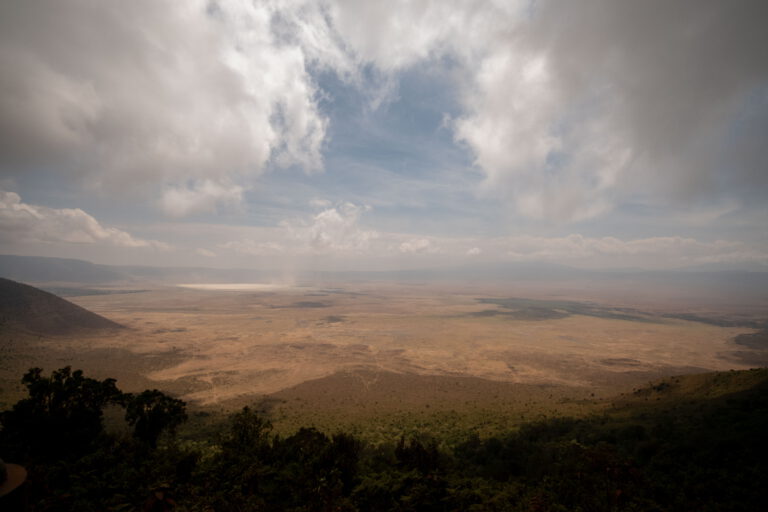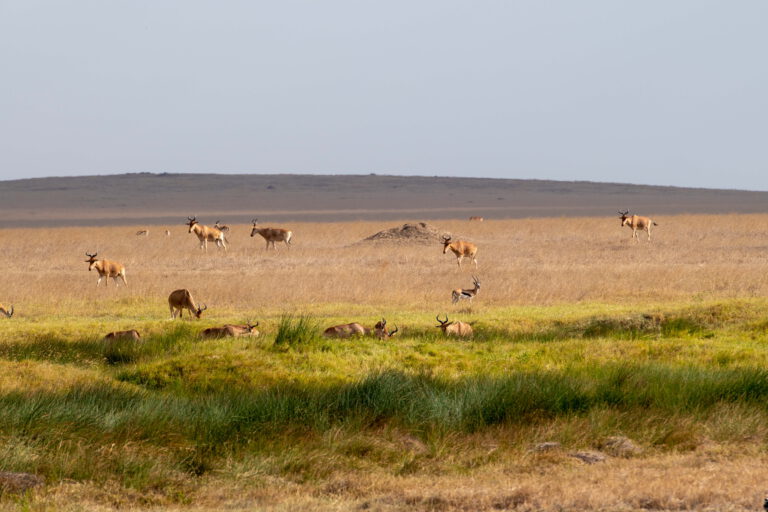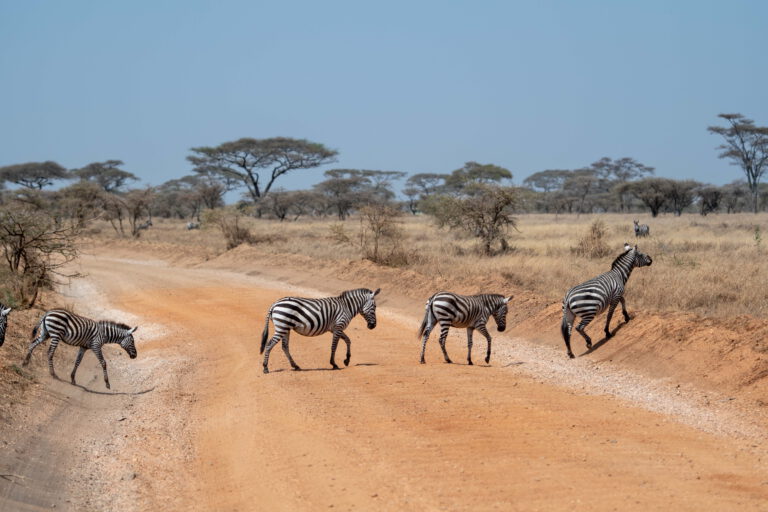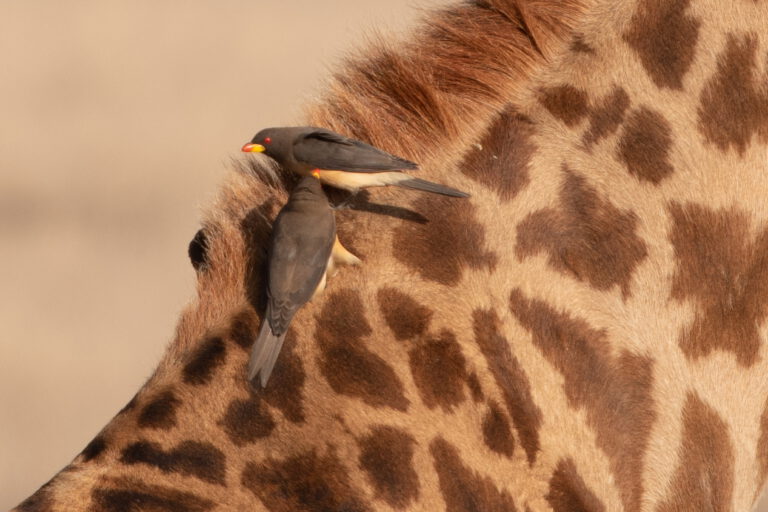Understand the country and the people -
then you will love it
Key Facts
Country name: United Republic of Tanzania Capital: Dodoma
Seat of government: Dar es Salaam
Type of state: Federal Republic
Form of government: Presidential system
Official language: Swahili (national language) English (2nd official language)
Currency: Tanzania Shilling (TZS)
Telephone area code: +255
Internet TLD: .tz
Time zone: UTC+3
Area: 945,087 km2
Population: 63,115,700 (as of 2020)

Geographical location
The mainland
In the east, there is a 16-64 kilometre wide coastal plain with tropical vegetation.
The south is characterised by a 900m to 1200m high plateau that reaches as far as Lake Malawi.
In the north is the Maasai savannah, which lies between 200 and 1100 metres above sea level.
In the west, the Central African Rift Valley touches Tanzania.
The East African Rift runs through central Tanzania.
Tanzania’s position on this tectonic fault zone is made visible by the most famous mountain massif in Africa, the Kilimanjaro massif in the northeast, with the highest mountain on the continent, Kibo, whose peak, Uhuru Peak, is 5,895 metres high. 895 metres, as well as the huge volcanoes and craters, such as the still active Ol Doinyo Lengai (2,960m) and the Ngorongoro Crater (2,300m) in the northwest, Mount Meru (4,562m) in the Arusha region and Mount Rungwe (2,960m) in the south. This is where the eastern and western arms of the East African Rift Valley meet.
In the west, southwest and northwest, the largest and deepest lakes in Africa are lined up along the Tanzanian border and the western rift of the Great Rift Valley like a string of pearls. Starting in the south with Lake Malawi, continuing in the west with Lake Tanganyika to Lake Victoria in the northwest.
A large part of Tanzania is dominated by wet and dry savannahs with baobab trees and umbrella acacias. Coastal plains, partly with mangrove swamps, and semi-deserts make up the rest of the landscape.
The islands
The islands off the mainland of Tanzania consist of the two neighbouring islands of Unguja, which used to be called Zanzibar, and Pemba, with its neighbouring islands, as well as the remote little Latham Island. They are all located in the Zanzibar archipelago.
In the south is the island of Mafia, which is not part of this area but belonged to the Sultanate of Zanzibar until 1885. In geographical terms, however, Mafia Island must still be assigned to the Zanzibar Archipelago.

Climate
Due to its proximity to the equator, Tanzania has a tropical climate with warm to hot temperatures all year round. However, the climate varies greatly due to the considerable geographical differences. The different climatic regions can basically be divided into 4 categories.
Coastal region and islands
Hot and tropical climate with high humidity (70-85%) and temperatures of 25-35 °C. with warm nights that hardly cool down. Heavy rains are to be expected in April/May. From June to September it is driest. During the rest of the year there may be occasional short showers.
Mountains
In the Kilimajaro area, the Usambara Mountains in the north-east, the Ngorongoro Crater in the north-west and the high altitudes in the Mbeya region in the south-west, the climate is temperate all year round with average temperatures of around 22°C and very cool nights.
Central Tanzania
The central plateau is located at an altitude of about 1,200m and is subject to greater temperature variations. With very dry and warm days with temperatures around 35°C and cool nights. Often a strong wind blows from the savannah.
Lake regions in the west
Temperatures are similar to the central plateau, but humidity is higher, resulting in more frequent and heavier rainfall.
Rainy seasons
Here it is the same as with the climate in Tanzania in general. The rainy seasons also vary from region to region.
In the northeast and east, the northeast monsoon “Kazkazi” brings the small rainy season with many showers and thunderstorms in mid to late October. This lasts until the beginning of December. During the small rainy season, however, most roads in Tanzania are passable without problems.
The “Kuzi” is the south-east monsoon and brings the big rainy season to the east and north-east. This begins in mid to late March and lasts until the end of May. During the big rainy season it does not rain all the time, but in some regions of Tanzania, especially in the southeast, persistent and heavy rainfall can cause flooding and impassable roads.
In the south of Tanzania, the rainy season usually only lasts from April to May. The intensity and impact of the rainy season is no different from the rainy season in the north.
In the southwest, it is the same as in the north, except that the two rainy seasons, which follow each other in quick succession, often merge into one.

The history
The East African Rift Valley is considered the cradle of humankind. Bone finds dating back up to six million years prove this.
A spectacular bone find in the Olduvai Gorge, which lies between the highlands of the Ngorongoro Crater and the Serengeti, also illustrates this in Tanzania. With the Afra Triangle in Ethiopia and sites in the South African province of Gauteng, it is considered the “Cradle of Humankind”.
The bone find, which dates back to two million years, was discovered in the 1950s. The gorge became internationally known through the discovery of these numerous Pleistocene fossils of early relatives of anatomically modern humans. The Oldowan culture, from which the oldest stone tools originate, owes its name to this gorge.
Little is known about the history of the early inner Tanganyika.
is little known. It is assumed that this area was inhabited by ethnic groups who used a snapping language similar to the South African Khoisan.
In the middle of the 1st millennium
Bantu peoples migrated to the inner Tanganyika and practised agriculture.
In the middle of the 2nd millennium
these were then supplemented by the migrating pastoralist peoples of the Nilotes. The long history of immigration cannot be summarised in years. However, it is known that both ethnic groups occupied their own territories and regions. They formed early state-like clan societies in rain-fed areas where their settlement areas overlapped. These were economically more successful because of the combination of agriculture and animal husbandry.
The greater part of the interior regions was largely unknown to Europeans. It was not until the middle of the 19th century that European research began. In 1840, two German missionaries reached Kilimanjaro. Richard Burton and John Speke penetrated as far as Lake Tanganyika in 1857. David Livingstone, the Scottish missionary and explorer, lived in Ujiji on his last mission. There he was “found” by the American journalist Henry Morton Stanley, who had been looking for Livingstone on behalf of the New York Herald.

History- The coastal strip
At the beginning of the 1st millennium
there were probably already the first trade contacts with the Mediterranean region. It is assumed that the regular monsoon winds made it possible for sailing ships to travel along the coast, which, however, also necessitated months-long stays until the annual change of wind direction. In an ancient maritime handbook, for example, the place name Rhapta is mentioned. This place is assumed to be in the region between Tanga and the Rufiji Delta.
Traders from Arabia and Persia probably settled on the coast as early as the 8th century. In these settlements, the Islamic seafarers and merchants mixed with the indigenous population, giving rise to the Swahili culture. Along the coast, highly developed cities and trading centres such as Zanzibar and Kilwa emerged.
At the beginning of the 15th century until the end of the 17th century
Portuguese naval power claimed the entire coastal region for itself. The Portuguese navigator Vasco da Gama explored the African east coast in 1498 on his voyage to India. In 1506, Portugal annexed the entire East African coast. However, this annexation only existed on paper, as Portugal only used bases such as Momnassa and Zanzibar as stopovers for their Indian fleet on the way to India or Ilha de Mocambique. Due to the few soldiers that Portugal could station in the region, not the entire area was colonised.
At the end of the 17th century
Portugal was no longer able to counter Oman’s expansion and the fortress of Fort Jesus in Zanzibar fell in 1698. After the Portuguese were driven out of Zanzibar by the Omani Arabs, the latter installed their Welsh in the coastal towns and thus achieved a loose suzerainty.
In the 19th century
the plantation economy, especially the cultivation of the newly introduced, profitable cloves, led to a steep economic upswing. As a result, the immigration of Omani Arabs increased steadily. Their ruler Sultan Sayyid Said (1804-1856) asserted himself against the local rulers of Mombasa and thus strengthened his influence on the entire Swahili coast. Because of the insecure situation in Oman at that time, he even moved the seat of government from Oman to Zanzibar for 11 years in 1840, where peace prevailed and high revenues could be achieved through customs revenues from his own plantations.

Colonial period
Strictly speaking, the colonial era began with the reign of Sultan Sayyid Said around 1830, whereby the interest and nominal sovereignty was limited to the coastal cities and Zanzibar. In 1884, Germany’s colonial interests were established by the Society for German Colonisation, in the person of Carl Peters. Later, this society became the Deutsch-Ostafrikanische Gesellschaft. Carl Peters wanted to establish a private colonial empire with his colonial society by concluding numerous treaties with tribal chiefs. These “protection contracts” assured the tribal chiefs protection from enemies. In return, the Gesellschaft für Deutsche Kolonisation was to have the sole and unrestricted rights to set up an administration and a judiciary. The company was also allowed to bring soldiers and weapons into the country and to give “mountains, rivers, lakes and forests” to settlers for unrestricted use.
In the legal sense, however, these treaties were in no way tenable. Peters presented the chiefs with German-language contracts, often after considerable alcohol consumption, which they then signed with crosses. Whether the signatories understood the contracts they signed at all and whether they were authorised signatories or possessed power of attorney to dispose of the listed powers was never checked.
Karl Peter’s sole aim was to obtain letters of protection for the illegally acquired territories from the Reich. Imperial Chancellor Bismarck expressed his disapproval of the papers presented and initially rejected them. But when King Leopold of Belgium expanded his empire in Central Africa after the Congo Conference and, according to Peters, also reached out to East Africa, Bismarck’s resistance was broken. In the spirit of his national-liberal allies in the Reichstag, he issued an imperial charter of protection over the Usagara, Nguru, Useguha and Ukami regions, modelled on British charters. Peters had achieved his goal and he had the necessary backing to press ahead with his expansion plans. In order to be able to set up a German administration in the already “contractually guaranteed territories”, to exploit mineral resources and to levy taxes, Peters founded a private form of organisation in 1886 called the “General German Association for the Promotion of Overseas German-National Interests”. The following year, the Sultan of Zanzibar placed the Zanzibar coastal strip from Umba to Rovuma under the administration of the association. In 1889/90, the “German Emin Pasha Expedition”, so named by Peters, was carried out, which led through Kenya to Uganda. The aim of this expedition was to add Uganda and the former Egyptian Equatoria Province to the German colonial empire.
Through the Uganda Treaty with King Mwanga II of Buganda, a friendship and economic agreement was reached. However, this was nullified by the Heligoland-Zanzibar Treaty of 1 July 1890.
The uprising of the East African coastal population in 1888/89 caused the collapse of the “German East African Society” and ended its attempt to dominate East Africa.
The German Empire took control in 1891, appointed a governor with headquarters in Dar es Salaam and Peters was appointed Reichskommissar in the Kilimajaro area. This gave Peters, an avowed racist, a position of power with which he terrorised the population around Kilimajaro conscientiously and mercilessly. Often for purely personal reasons, he proceeded against the country’s inhabitants with extreme brutality and the arbitrary imposition of the death penalty. He kept African girls as mistresses and when he found out that one of these poor girls (his concubine Jagoda) was having an affair with his servants, he had them both publicly hanged and their home villages burnt down. The subsequent armed resistance of the Chagga was brutally suppressed for months. As a result of these horrific and inhumane events, Peters was ordered back to Germany in 1892 where investigations were initiated against him. August Bebel, a Social Democratic member of parliament, cornered Peters following testimony from a British missionary. At the end of the investigation by the Imperial Disciplinary Court, Peters was dishonourably dismissed from the Reichsdienst, losing his title and pension rights. To escape the proceedings, Carl Peters left Germany.
In 1891 and 1894
1905 bis 1907
Strictly speaking, the colonial period already began with the rule from 1905 to 1907.
resistance reached its climax in the Maji-Maji uprising. It goes down in history as one of the largest colonial wars on the African continent. Members of different ethnic groups formed a broad alliance that spread over an area the size of Germany. The religious cult of Maji-Maji encouraged the rebels to rise up against the militarily far superior colonial rulers across ethnic boundaries. After initial successes by the indigenous population, the insurgency was countered with the latest weapons technology, such as water-cooled machine guns, and the Maji-Maji fighters were killed by the hundreds in the fighting. When they switched to guerrilla tactics, the German troops responded by leaving “scorched earth” in their wake. They began to loot the villages, burn the crops and the fields as well as the villages. In the end, whole areas were like extinct and lay fallow. At the end of the Maji-Maji uprising, most of the country’s inhabitants died not from the volleys of bullets from the Germans’ machine guns but from the “scorched earth” left behind. The number of dead is estimated at between 75,000 and 300,000.
1917
The German colonial period in Tanzania came to an end. The German Schutztruppen were pushed into Mozambique, whereupon British and Belgian troops occupied the country. This fighting, the resulting looting and devastation by the warring parties, in turn led to great losses among the civilian population.
The territory formerly occupied by the Germans was divided up among the victors. The Kionga Triangle went to Portugal, Rwanda and Burundi to Belgium, and the rest of the territory came to Great Britain as “Tanganyika Territory” under a League of Nations mandate. The long-term mandate was to prepare Tanzania for independence.
After World War II, Tanganyika became a UN mandated territory under British rule. Tanganyika now gradually moved towards independence.
The teacher Julius Nyere organised the political party Tanganyika African National Union (TANU) in 1954.
1961
Tanganyika achieved full independence on 9 December 1961 when Tanganyika became a republic in the Commonwealth. Julius Nyerere was elected the first president of the new republic.
1964
On 26 April, Tanganyika and Zanzibar initially merged under the name United Republic of Tanganyika and Zanzibar. Half a year later, on 1 November 1964, this was then renamed the United Republic of Tanzania.
Julius Nyerere and his party then sought to build a socialist state. He nationalised banks and carried out educational and land reforms. The goal was a specifically African socialism, which was to set itself apart from totalitarian socialism based on the Soviet model. The “Ujamaa” was to serve as a model. This envisages the village community as a production and distribution collective. However, this model failed when it was applied to larger production units. With the accompanying deterioration of economic conditions, Nyerer’s socialist vision also died. He resigned as president in 1985.
1992
End of the one-party system in Tanzania
1995
Democratic elections were then held for the first time since the 1970s. However, the previously ruling CCM party won again.

we show you the way to happiness
Bahati Safari
Bahati Safari
“It’s not the land we discover, we discover ourselves.”
ADDRESS:
Dorsch GmbH
Grafenriederweg 5
93152 Nittendorf
Germany
+49 151 194 0 171
E-mail:
legal
Privacy
Imprint
Cookie-Policy
